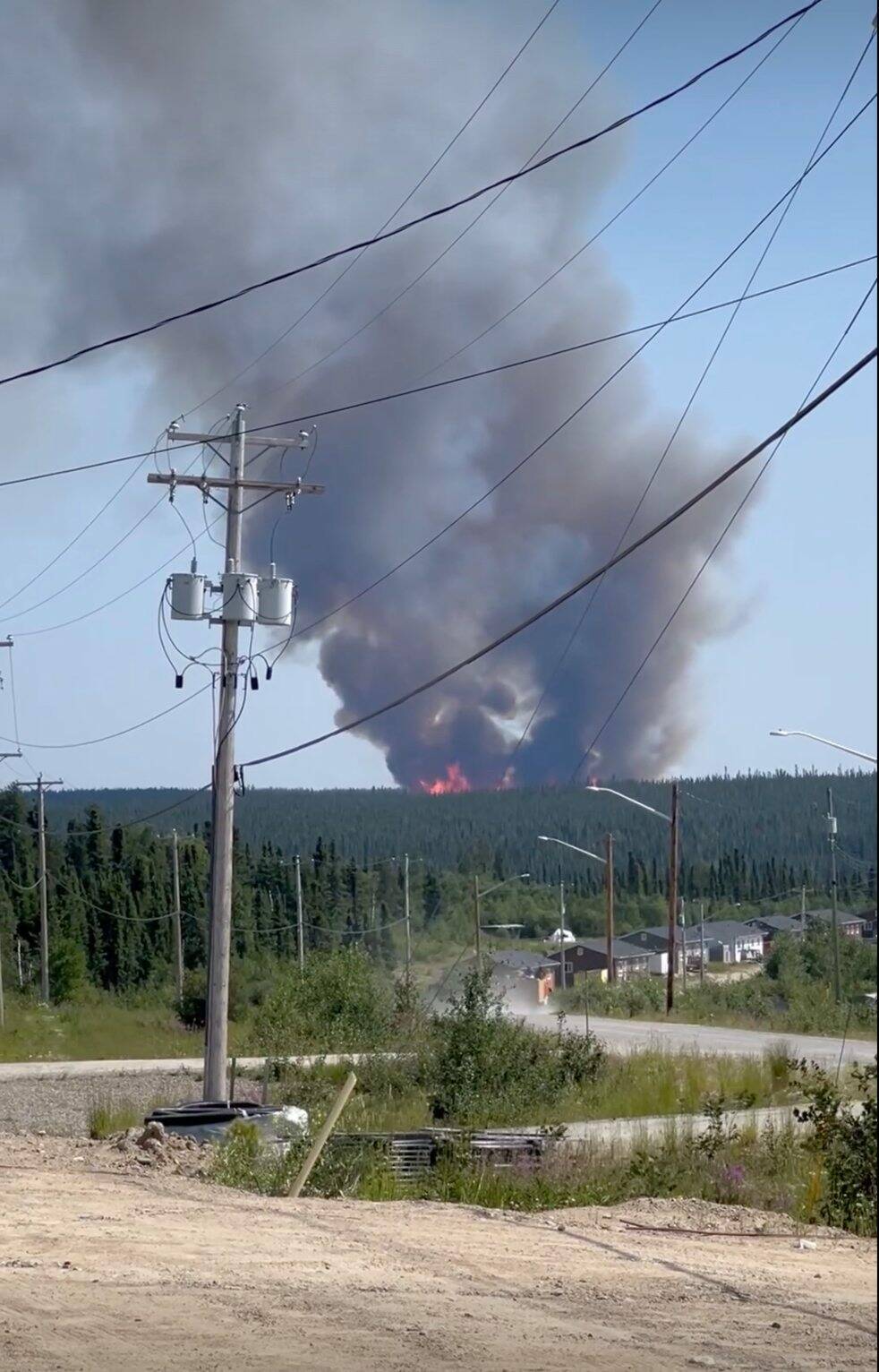I’m willing to bet that by the time you read this, you will have heard about the devastating wildfires raging through Jasper, Alberta, and seen images of the devastation.
Mandatory evacuation orders were issued Monday to the nearly 25,000 residents and tourists inhabiting the town in Jasper National Park.
Dozens of homes and businesses — including the iconic Maligne Lodge — were engulfed in flames Wednesday night.
Alberta Premier Danielle Smith held an emotional news conference Thursday to report that as many as half of the buildings in the treasured Rocky Mountain resort community had been burned.
Prime Minister Justin Trudeau approved emergency federal assistance for the province, deployed the military to assist in fighting the fire and evacuations and posted on X: “Alberta, we’re with you.”
A wildfire in one of the country’s most popular tourist destinations is, of course, worth all of the attention.
The 890,000-barrel-per-day Trans Mountain Pipeline, which runs from Edmonton to Vancouver, passes close to the town, but is, so far, continuing to operate safely, officials said.
As of Thursday, 54 of the 176 active wildfires in Alberta were classified as “out of control.”
Six combined to become one huge blaze last weekend, forcing the evacuation of the 5,200 residents of Little Red River Cree Nation, a group of three communities more than 500 kilometres north of Edmonton.
Nearly 100 structures burned in a similar situation last year.
“I never thought we would be doing this again,” Little Red River Cree Nation Chief Conroy Sewepagaham said in a video posted to Facebook.
As of Tuesday, 3,600 fires had consumed 2.2 million hectares across Canada in 2024. Of that number, 950 were burning Tuesday.
There have been 153 wildfires in Manitoba so far this year, 53 of them currently active. The province’s fire map indicates 10, most in the northwest, are “out of control.”

Supplied
A 2,000-plus hectare fire threatens Pukatawagan Cree Nation (also known as Mathias Colomb First Nation) in Manitoba.
There’s a large one about 35 kilometres north of Garden Hill First Nation. Two have joined to create a more-than-2,000-hectare blaze threatening Pukatawagan Cree Nation (also known as Mathias Colomb First Nation). Another is burning about 60 km northeast of Thompson, and two separate fires are closing in on Marcel Colomb First Nation, leading to this week’s evacuation of elders, children and other vulnerable residents.
The communities have lived through the fear and danger before. Pukatawagan residents were forced to flee flames in July 2022. Marcel Colomb has been evacuated multiple times over the last decade.
Firefighters, local leadership and Manitoba’s fire protection program, along with plenty of rain, have so far ensured the communities haven’t suffered significant damage this summer. Manitoba is down nearly 100 wildfires from last year at this time.
“I never thought we would be doing this again.”–Little Red River Cree Nation Chief Conroy Sewepagaham
But the forecast over the next few days and into August is heat, in some cases potentially record-setting temperatures, which means there are likely going to be more evacuations of First Nations.
Research published in 2019 in the International Journal of Disaster Risk Reduction, reported 80 per cent of “majority-Indigenous” communities (First Nations and urban areas) are located in “fire-prone” regions.
Due primarily to climate change — resulting in more lightning and drier forests — the number of wildfires is increasing overall. A massive heat wave this month in Alberta and B.C. undoubtedly contributed to the conditions that sparked the catastrophe in Jasper.
Research published this year by the Canadian Interagency Forest Fire Centre, the warming global climate is leading to hotter and more devastating fires. The area burned across the country last year was six times higher than the yearly average.
Much of the territory is First Nations. This week’s evacuation of Marcel Colomb is likely just the beginning.
It’s good when Canada acts after losses such as the one in Jasper. No doubt something will be done to ensure it doesn’t happen again — like the protection measures instituted after the terrible fires that destroyed Fort McMurray, Alta., in 2016.
Communities such as Little Red River Cree Nation or — in Manitoba’s case — Garden Hill, Marcel Colomb and Pukatawagan are, perhaps, not viewed or valued in the same way Jasper is.
Northern Manitoba, I hope “we’re with you.”
niigaan.sinclair@freepress.mb.ca

Niigaan Sinclair
Columnist
Niigaan Sinclair is Anishinaabe and is a columnist at the Winnipeg Free Press.
Our newsroom depends on a growing audience of readers to power our journalism. If you are not a paid reader, please consider becoming a subscriber.
Our newsroom depends on its audience of readers to power our journalism. Thank you for your support.